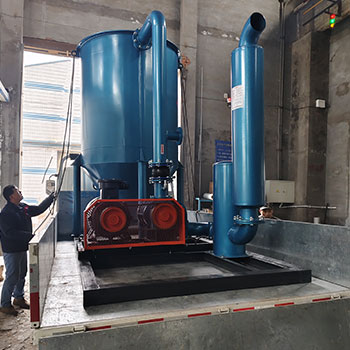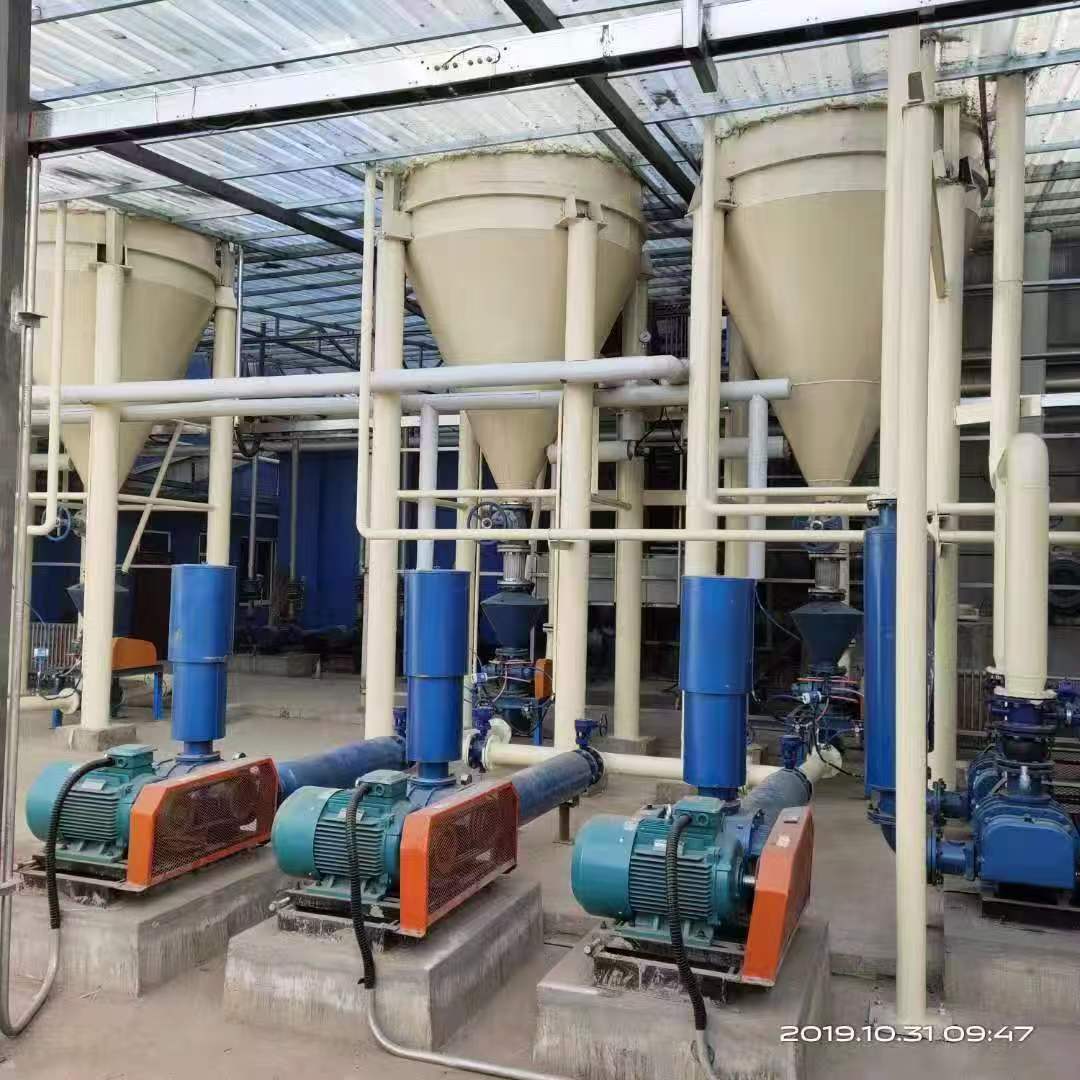 推荐消息更多>>
推荐消息更多>>气力输送系统价格由哪些因素决定?
- 来源:https://www.sdxinlujx.com/ 日期:2024-10-17 发布人:创始人
气力输送系统,是现代工厂中较为常见的一种输送散装物料的运输方式。气力输送系统厂家在设计系统前,需要客户提供系统布置方案、气力输送系统的输送能力等具体需求,此外,还需要了解被输送物料的特性、工艺特点等具体特点,然后才能设计出具有针对性的气力输送系统,并根据该系统向客户提供气力输送系统报价。
Pneumatic conveying system is a common transportation method for conveying bulk materials in modern factories. Before designing the pneumatic conveying system, the manufacturer needs the customer to provide specific requirements such as the system layout plan and the conveying capacity of the pneumatic conveying system. In addition, it is necessary to understand the characteristics of the conveyed material, process features, and other specific characteristics before designing a targeted pneumatic conveying system and providing a quotation for the pneumatic conveying system to the customer based on the system.
气力输送系统设计步骤一般可分为以下几点,这些因素都会影响到气力输送系统价格:
The design steps of pneumatic conveying system can generally be divided into the following points, all of which will affect the price of pneumatic conveying system:
1. 气力输送管道可垂直、水平的布置,因此布置灵活,根据工艺需求和工厂的现场条件,设计合理的管道布局,能确保系统经济实用无浪费;
1. Pneumatic conveying pipelines can be arranged vertically and horizontally, so the layout is flexible. Based on process requirements and factory site conditions, a reasonable pipeline layout can be designed to ensure that the system is economical, practical, and waste free;
2. 气力输送系统可分为正压密相气力输送、正压稀相气力输送、负压真空气力输送等多种类型,不同类型的气力输送系统适用于不同的输送物料、输送条件;
2. Pneumatic conveying systems can be divided into various types such as positive pressure dense phase pneumatic conveying, positive pressure dilute phase pneumatic conveying, negative pressure vacuum pneumatic conveying, etc. Different types of pneumatic conveying systems are suitable for different conveying materials and conditions;

3. 根据管道布置方案、被输送物料特性、气力输送系统的类型、客户具体的生产要求等方面的因素,综合决定气力输送系统的气流速度、悬浮速度、输送浓度等因素;
3. Based on factors such as pipeline layout plan, characteristics of conveyed materials, type of pneumatic conveying system, and specific production requirements of customers, comprehensively determine factors such as airflow velocity, suspension velocity, and conveying concentration of the pneumatic conveying system;
4. 根据生产能力和已确定的气力输送系统的气流速度、浓度等因素,计算生产、输送所需的空气流量,从而决定输送管道的直径,以确保输送顺利进行;
4. Based on production capacity and factors such as airflow velocity and concentration of the determined pneumatic conveying system, calculate the required air flow rate for production and conveying, and determine the diameter of the conveying pipeline to ensure smooth conveying;
5. 根据已确定的数据,计算各主要部件的结构和尺寸,选择合适品牌的部件和设备;
5. Based on the determined data, calculate the structure and dimensions of each main component, and select appropriate brands of components and equipment;
6. 完成总体设计后,气力输送工程设计师对整体设计进行回顾,计算系统各组成部分的数据,包括管道压力损失、系统压力损失等数据,确定气源设备所需功率;
After completing the overall design, the pneumatic conveying engineering designer reviews the overall design, calculates the data of each component of the system, including pipeline pressure loss, system pressure loss, etc., and determines the required power of the gas source equipment;
7. 根据计算数据,选择合适的气源设备和配置驱动装置。
7. Based on the calculated data, select the appropriate gas source equipment and configure the driving device.
本文来自:负压气力输送更多的内容请点击:https://www.sdxinlujx.com我们将会为您提问的问题提供一个满意的服务,欢迎您的来电!
This article is from: Negative pressure pneumatic conveying. For more content, please click: https://www.sdxinlujx.com We will provide satisfactory service for the questions you ask. Welcome to call us!
- 上一篇: 真空上料机的使用优势
- 下一篇: 负压气力输送设计原始条件
Related news相关新闻
- 2025-10-25磁悬浮鼓风机:节能环保高效的气体输送设备
- 2025-10-24气力输送系统输送时物料易破碎怎么办?
- 2025-10-23旋转供料器在粉体输送中发挥中锁风下料、定量吹送的作用
- 2025-10-22仓泵在气力输送“心脏”中,扮演着重要角色
- 2025-10-21负压气力输送适合输送哪些类型的物料?
- 2025-10-20安全使用高压罗茨鼓风机必须要注意的8个方面
- 2025-10-18三叶罗茨风机经过频繁检修后,整理的常见故障原因和解决方法
- 2025-10-17高压罗茨鼓风机节能省电的方法和运行中的摩擦原因
- 2025-10-16高压罗茨风机 VS 离心风机,区别有哪些?
- 2025-10-15高压罗茨风机的产品介绍和适用场景












 扫码微信沟通
扫码微信沟通